Purists like myself believe baseball is the ultimate game for many reasons. The perfect symmetry between the lines; the one-on-one battles; a history, nostalgia, statistics and analytics like no other sport; the in-game strategies (the games within the game); the ability to actually converse between pitches and innings; a long 162-game season; picturesque ballparks; the embrace of local fandom; the game for radio; the best sounds of any sport; sandlot beginnings; no physical or size limitations to playing or excelling; the best Opening Day, All-Star Game, and Hall of Fame …
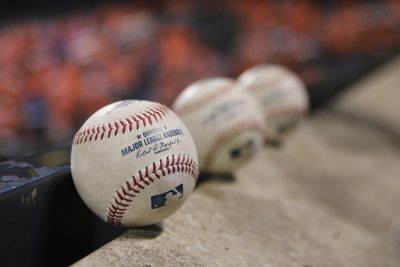
… and no clock. Relaxed and carefree, baseball is the one sport that doesn’t rush to finish. The game decides when it wants to end. No matter the deficit, a team is always still in the game. No buzzer, no bell, no taking a knee, no playing keep-away with the ball or puck. Until the final out is recorded, the team ahead continues to pitch, play defense and compete. The battles are real through to the 27th out.
Ditto with those who participate in baseball chatter — there is no clock and no off-season for those passionate about MLB.
The 2020 World Series concluded what was arguably the game’s most challenging season, intertwined, of course, with one of the most arduous, heartbreaking and human-crisis years in history.
Indeed, it’s a slippery slope to discuss the difficulty faced by one of our sports during the horror and heartbreak brought on by the pandemic. Our embrace of sports — as a diversion, as entertainment, as recreation — rests somewhat uncomfortably in the balance of the altered lifestyle list. Life is bigger than sports, of course. But sports and life cannot be separated. In some folks’ estimations, they are one.
And to those of us who strongly lean toward the belief that if there is no baseball in Heaven, we’re not going, getting the Boys of Summer back on the diamond last summer and grinding through a challenging season to its accustomed, if unconventional, conclusion just days before Halloween was comforting and even a tad therapeutic.
As with all professional sports, the pandemic shook up MLB in 2020. First, Summer Camp. Then, starts and stops, all Covid-related. Then, a shortened 60-game season, followed by an expanded 16-team postseason tournament concluding with a “bubble” World Series.
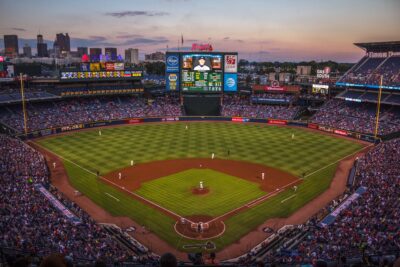
There is little reason to believe that baseball, like the rest of the world, will be any less challenged in 2021. The choppy waters associated with the pandemic will again have to be negotiated. In a “normal” year, spring training would be only a couple of weeks away at this writing. Decisions regarding that and Opening Day haven’t been made because we are still in anything but normal times, as the pandemic continues its vice-like grip on our world. There is a faint light and finally a plan for our country, but the tunnel is long and the journey still treacherous.
This brings me back to a socially distanced, safe path to traverse — debating elements of America’s Game. When you’re passionate about something, such random distractions help get the blood flowing even in the worst of times.
While any baseball is good baseball, select rule changes birthed because of the challenges of 2020 freshened the game. Some should be carried forward in 2021 and in seasons to come. In last year’s mini-season, I particularly enjoyed …
Not Watching a Single Pitcher Strikeout
That ninth spot in the order is nearly always an automatic out. At worst, it’s too often a painful experience. Give more hitters more of an opportunity to, well, hit. C’mon, stalwarts — universal DH is simply more exciting. I’ve yet to hear a sound argument against it. There are still plenty of managerial strategies to be embraced. Answer me this: Why has NL baseball long been okay with a batting/offensive position in a lineup where making outs is assumed? S’plain me that, Lucy.
Even the best hitting pitchers — I nominate Zack Greinke and Madison Bumgarner — don’t bring honor and certainly not often excitement to the plate. Lifetime, Greinke brings to the plate stats barely worthy of the Mendoza line — .225 avg, .263 OBP, .337 Slugging, .600 OPS, with 19% of at his bats resulting in a strikeout. Bumgarner is even worse — respectively, .177, .228, .303, .532, and a whopping 43% of his at-bats end with him dragging his bat back to the dugout. And these two are amongst the best of their pitching brethren with bat in hand.
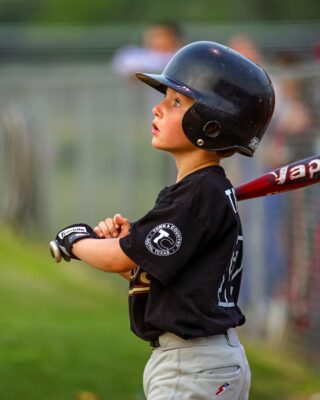
NL pitchers’ hitting-stats slash lines across three seasons (2017, 2018, 2019) are .119/.149/.154. (Slash line is a colloquial term representing a player’s batting average, on-base percentage and slugging percentage.) Pitchers are the best at what they do when they’re on the bump. Hitters are the best at what they do when they are in the box. Even with all the mayonnaise in the world, you can’t make chicken salad out of chicken poop.
This is pretty simple. Think fan and even dugout anticipation. Think increased scoring. Think Big Poppy, Paul Molitor, Edgar Martinez, The Big Hurt, Hal McRae. Think extending great players’ careers. Think keeping the most valuable commodity in the game — pitching and pitchers — safer. After this weird, wacky and wonderful season, institute the DH in both leagues. Permanently.
Requiring Pitchers to Face at Least Three Batters
On the subject of infusing more strategy in the game, requiring pitchers to face at least three batters or pitch to the end of a half-inning (with exceptions for injuries and illnesses) ramped up the intrigue of batter-versus-pitcher. Importantly, too, it also kept managers in the dugout probably 40% more than in recent seasons. Moving away from specialized relievers and analytics even a teensy bit and making way for versatile mound studs will continue to be embraced by fans. Again going old-school, read: Bruce Sutter, Goose Gossage, Dennis Eckersley, Lee Smith, Hoyt Wilhelm, Tug McGraw, Mike Marshall. Keep this one in the rule books.
Limiting Doubleheaders to Seven Innings
The promise of at least 14 innings on doubleheader gameday is plenty to anticipate, and if the move limits the burden on bullpens, what’s not to like? Now, if post-Covid, we could just talk owners into again charging single-game prices for doubleheader admission, the baseball world would be a tad more peachy keen.
Perfect Weather Every Game
Ending the season with a World Series in a warm-weather city or a domed stadium was ideal and not often discussed with the Covid cloud overhead. Too often, players in October are on fields averaging temps in the 40s. And, of course, the media gods and owners long ago joined forces on the call to start World Series games too late (read: even colder) in the evening. (Uggh. Another topic for another day.) Too often, players in the playoffs look like their moms bundled them — layers, masks and gloves, with jackets immediately donned upon exiting the field of play. Too often, numb pitchers can’t feel the ball, hitters can’t properly grip the bat … and Oh, those painful stingers! And that’s for the on-field players.
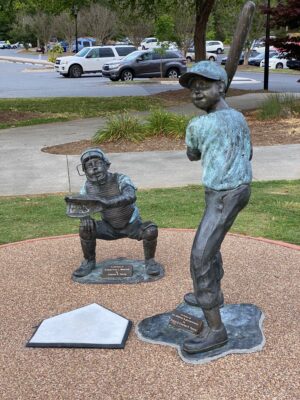
Pity those sitting in the dugout or the bullpen for two-plus hours every game. Warm-up? Don’t think so. Players and fans deserve baseball played in perfect baseball weather, at least in the post-season. Cameras on a centerfielder whose every breath can be seen through a ski mask isn’t a good look for our National Pastime.
Single Series Location
In 2020, we embraced what the NFL figured out some LV years ago — i.e., hosting our game’s championship in a high-drama, all-on-the-line, NL versus AL, single venue. In Arlington, Texas, Globe Life Field hosted the 116th edition of the World Series, making this the first Fall Classic held at a neutral site and the first since 1944 to be played at only one ballpark.
That’s as it should be going forward. Rotate the World Series amongst warm-weather cities or those with a domed stadium. Baseball’s alternating All-Star game is a PR spectacle for the game and a business boon for the hosting municipality — mimic that genius marketing move for the game’s championship showcase. Hometown fans of the participating Series cities will find their way to the game or enjoy watching their teams in an ideal environment for the game from the cozy confines of their homes or local establishments of imbibing and culinary delight.
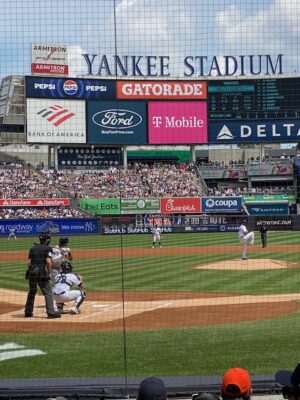
Although the owners and players association seemingly never agree on anything, I suspect that the resulting revenue sources generated from a World Series in a single ballpark could be split amongst all of the “players,” included bonus benefit to the NL and AL representatives (because they earned it).
Expectorating
No spitting, including sunflower seeds, peanut shells or tobacco. In addition to the actions’ rather repellant nature, perhaps a few more kids will start out on the right foot from an emulation standpoint. Hygiene has never been a top priority on the diamond. Cameras caught bunches of offenders last shortened season, but this rule can and should be locked in place in future seasons.
Shorten the Season
While the disarray associated with Covid pushed baseball into a 60-game season that worked, don’t let that one-off rescue encourage discussion to return to a 154-game (or less) season. Baseball’s stats are vital to our game; lessening the number of games would further jeopardize sacred-to-the-game statistics and accomplishment comparisons. The solution to keeping the consecrated 162-game season and its accompanying historical baseline numbers? Schedule 8-12 home doubleheaders of the 7-inning variety, effectively ending the season a couple of weeks earlier. Better yet, lock in a “day” that families could faithfully calendar — i.e., Doubleheader Saturday.
Advertising on Jerseys, Bases, etc.
That’s as it should be going forward. Rotate the World Series amongst warm-weather cities or those with a domed stadium. Baseball’s alternating All-Star game is a PR spectacle for the game and a business boon for the hosting municipality — mimic that genius marketing move for the game’s championship showcase. Hometown fans of the participating Series cities will find their way to the game or enjoy watching their teams in an ideal environment for the game from the cozy confines of their homes or local establishments of imbibing and culinary delight.
Cutout Fans
I certainly hope this hot mess the world is still in will make this concept unnecessary toward the end of 2021 in all sports. Still, it’s worth hoping that whoever in some ballclub’s marketing department initially came up with this idea for the regular season and some of the early playoff games got a nice bonus.
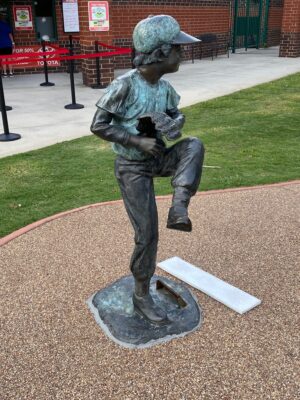
It was fun. It conveyed that fans are still the most essential element of the game and were big-time missed. Behind the plate was fun. Down the lines and in the outfield, even more enjoyable. Empty venues are for bad ballclubs. Television made this simple visual a feel-good experience. Ditto with piped-in fan noise and music. Another plus: Not once in the playoffs or season did we have to endure a Fan Wave! Having been in many a stadium sans fans (read: Washington Senators, Tampa Rays, Miami Marlins), cardboard cutouts of fans are far more appealing than blue tarps and whole sections of stadium seating closed off. Sell the cardboard cutouts to fans and corporations to thank their clients and employees, and donate the monies to MLB Charities.
Let’s Not
Only a couple Covid-adopted changes come to mind as receiving a lukewarm grade, from me at least, with accompanying hopes they will disappear along with the virus:
- The extra-innings rule that allows clubs to have a runner placed on second base to start the inning. Throughout baseball history, nothing is given. Everything is earned 90 feet at a time. How’d that guy get out there on second base? Bring back the potential and ever-increasing drama of 16-inning ballgames. They don’t occur that often. Bonus Baseball is never a bad thing. If you’re tired, change the channel or go home and listen to the game from the car.
- Expanding the postseason to a 16-team format. Playoff appearances should be earned by the exclusive few, excluding ballclubs with .500 or lower records, and not in any manner associated with or dictated by the desire for more television revenue.
Standing Ovation
Overall, kudos to baseball in Covid times. Season-ending stats in 2020 didn’t get us to “the norm” — e.g., 47, 115, .305, .629 (MVP 2019, Bellinger) or 21-6, 2.58, 300 Ks in 223 innings (Cy Young 2019, Justin Verlander), but the beautiful game’s best of the best — Trout, Betts, Tatis, Freeman, Cruz and others at the plate, and Cole, Beiber, Maeda, Kershaw, Scherzer, Darvish toeing the rubber were still sterling game in and game out, putting up impressive numbers. And what a stout, exciting contingent of young talent we saw in the mini-season! Box scores are still box scores, devoured by the diehards, and this is one dyed-in-the-wool fan who was perfectly okay with batting leaders winning titles with 22 HRs (Voit) and 60 RBI (Abreu), and Bieber (for a single pitching example) putting up a Gibson-like 14 Ks per 9 innings with a season-ending 1.63 ERA.
Additionally, it’s a safe prediction that, with a true off-season and a full slate of what appears to shaping up as a 162-game season, fans will see in 2021 the studs who never quite got on track in the choppy 2020 season (e.g., Yelich and Arenado) post big numbers.

Back-of-the-card stats bear out the fact that players, over the course of a full season, become what they are supposed to be. Especially in their prime, they become what they are numbers-wise.
I’m proud of baseball. The BEST of our games got through a daunting time and still shined. When the Series’ last out was recorded, fans were once again presented with the classic little-kids-joy, on-field celebration of a treasured goal accomplished. It’s a beautiful thing, especially if you’re a Dodgers (and Kershaw) devotee. Incorporating lessons learned from last year’s challenging season will make the game more appealing in the future for diehard and casual fans and perhaps even bring younger fans to the ballpark in larger numbers in 2021.
Now if only devotees of the game somehow could be blessed with owners and players who actually talk to each other in good faith rather than talk past each other. We could use a good ballgame right about now.
When do pitchers and catcher report?











Troy
Very nice post. I just stumbled upon your weblog and wished to say that I have really enjoyed browsing your blog posts. In any case, I love baseball and I’ll be subscribing to your feed and I hope you write again on this topic very soon!
Gerrie
Hiya, I am really glad I have found this info. My family and I LOVE baseball. Today bloggers publish only about gossip and web stuff and this is really annoying. A good blog with exciting content, this is what I need. Thank you and congrats for making this website. I will subscribe. Good luck!
Gary Handleman
Lee – Very interesting reading your thoughts. So many appropriate comments on all of your blogs. You should have been writing these when you sat for many hours as a guard at Capital Centre. Thanks for sharing your musings.
Jake
Lee, Lee, Lee, it’s BASEBALL. Play it the way it is meant to be played. I do agree with some of the changes. I have never liked the DH. There can be so much strategy that comes into play, especially in the late innings. When to replace a pitcher now or let him go one more batter because he is up next inning. If he makes it, you save a hitter and can use a double-switch to rearrange the order. I say no DH unless it’s a Covid year and then nothing really counts. The other changes are not as bad, although they are still changes. Shorten the season? I’m 50/50 on that one. It does end way too late. Cutout fans I like. It’s one way to enforce social distancing. Spitting can go. If they can stop Tiger from spitting they can stop a lot of players. The first of your Nots — let’s not. Those boggle the mind! P.S. Love the blog and baseball, too!